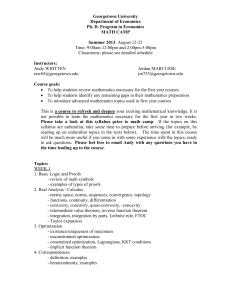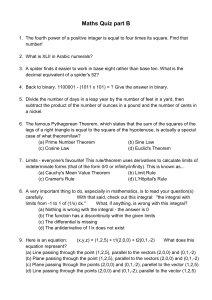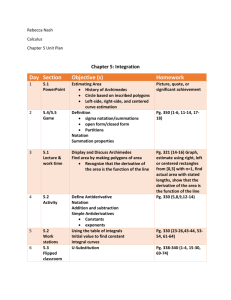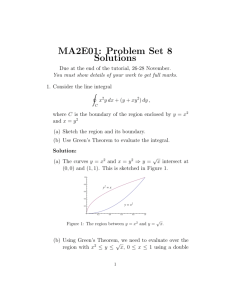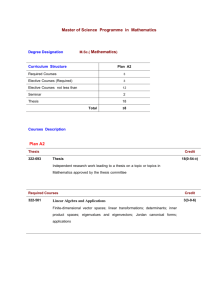Mathematics for economic analysis
advertisement
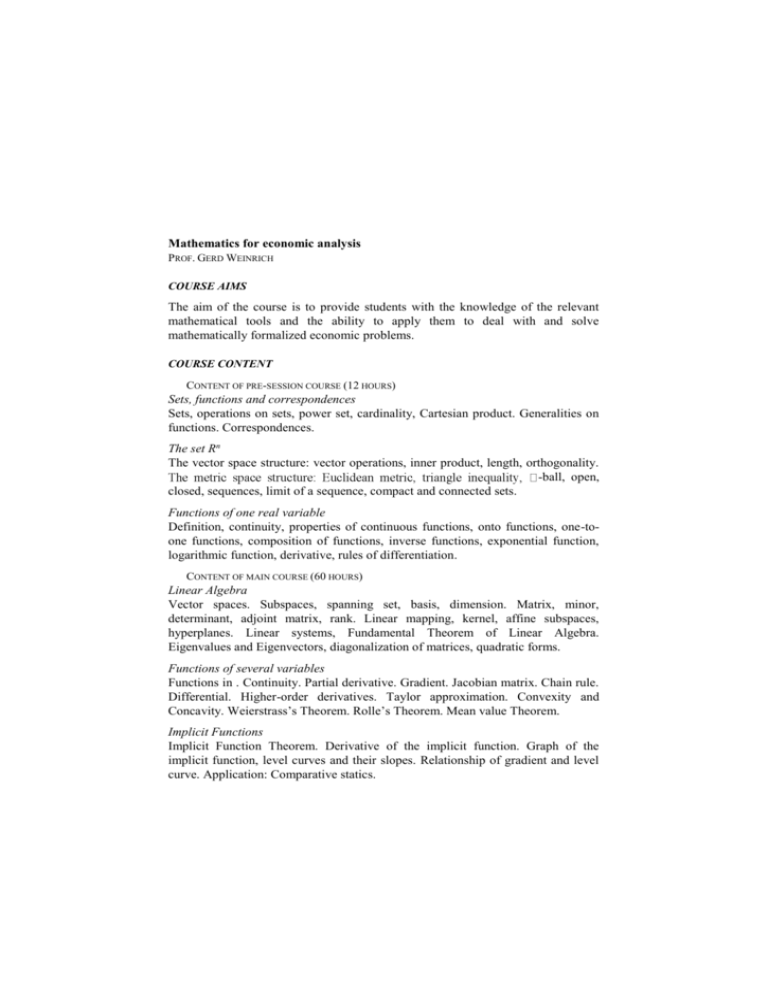
Mathematics for economic analysis PROF. GERD WEINRICH COURSE AIMS The aim of the course is to provide students with the knowledge of the relevant mathematical tools and the ability to apply them to deal with and solve mathematically formalized economic problems. COURSE CONTENT CONTENT OF PRE-SESSION COURSE (12 HOURS) Sets, functions and correspondences Sets, operations on sets, power set, cardinality, Cartesian product. Generalities on functions. Correspondences. The set Rn The vector space structure: vector operations, inner product, length, orthogonality. -ball, open, closed, sequences, limit of a sequence, compact and connected sets. Functions of one real variable Definition, continuity, properties of continuous functions, onto functions, one-toone functions, composition of functions, inverse functions, exponential function, logarithmic function, derivative, rules of differentiation. CONTENT OF MAIN COURSE (60 HOURS) Linear Algebra Vector spaces. Subspaces, spanning set, basis, dimension. Matrix, minor, determinant, adjoint matrix, rank. Linear mapping, kernel, affine subspaces, hyperplanes. Linear systems, Fundamental Theorem of Linear Algebra. Eigenvalues and Eigenvectors, diagonalization of matrices, quadratic forms. Functions of several variables Functions in . Continuity. Partial derivative. Gradient. Jacobian matrix. Chain rule. Differential. Higher-order derivatives. Taylor approximation. Convexity and Concavity. Weierstrass’s Theorem. Rolle’s Theorem. Mean value Theorem. Implicit Functions Implicit Function Theorem. Derivative of the implicit function. Graph of the implicit function, level curves and their slopes. Relationship of gradient and level curve. Application: Comparative statics. Optimization Unconstrained optimization. Constrained optimization with inequality constraints (Kuhn-Tucker method). Constrained optimization with equality constraints (Lagrange method). Economic interpretation of the Lagrange multiplier: shadow price. Envelope Theorem. Theorem of the Maximum. Elements of Integral Calculus Antiderivatives, indefinite integral. Integration by parts and by substitution. Area and definite integral. Fundamental Theorem of Integral Calculus. Infinite intervals of integration. Dynamic Analysis Difference equations. Differential equations. Optimal control theory format. Hamiltonian conditions. Transversality condition. Diagrammatic analysis. READING LIST C.P. SIMON-L. BLUME, Mathematics for Economists, Norton, New York/London, 1994. P.J. LAMBERT, Advanced Mathematics for Economists, Blackwell, 1985 (ch. 7, for Dynamic Optimization only) Lecture slides will be available on Blackboard. TEACHING METHOD Lectures plus exercise group meetings. ASSESSMENT METHOD Students will be evaluated on the basis of a written exam. For the exam the complete program is relevant. There will be 4 questions worth 8, 8, 10 and 10 points, respectively. The questions aim at testing the understanding of the fundamental theoretical issues, the extent of the candidate’s knowledge and his/her ability to apply the theoretical understanding to practical problem solving. To pass the exam the student must obtain at least 18 points. Since the maximum total of points is larger than 30, to obtain 30 points it is not needed to solve every question completely, but a certain choice is possible. Who obtains more than 30 points receives as grade 30 e lode (distinction). The type of questions will be mostly similar to the exercises discussed in the exercise group meetings, but to give the possibility for outstanding students to show their excellence (to receive distinction), here and there a more sophisticated issue will be included.






